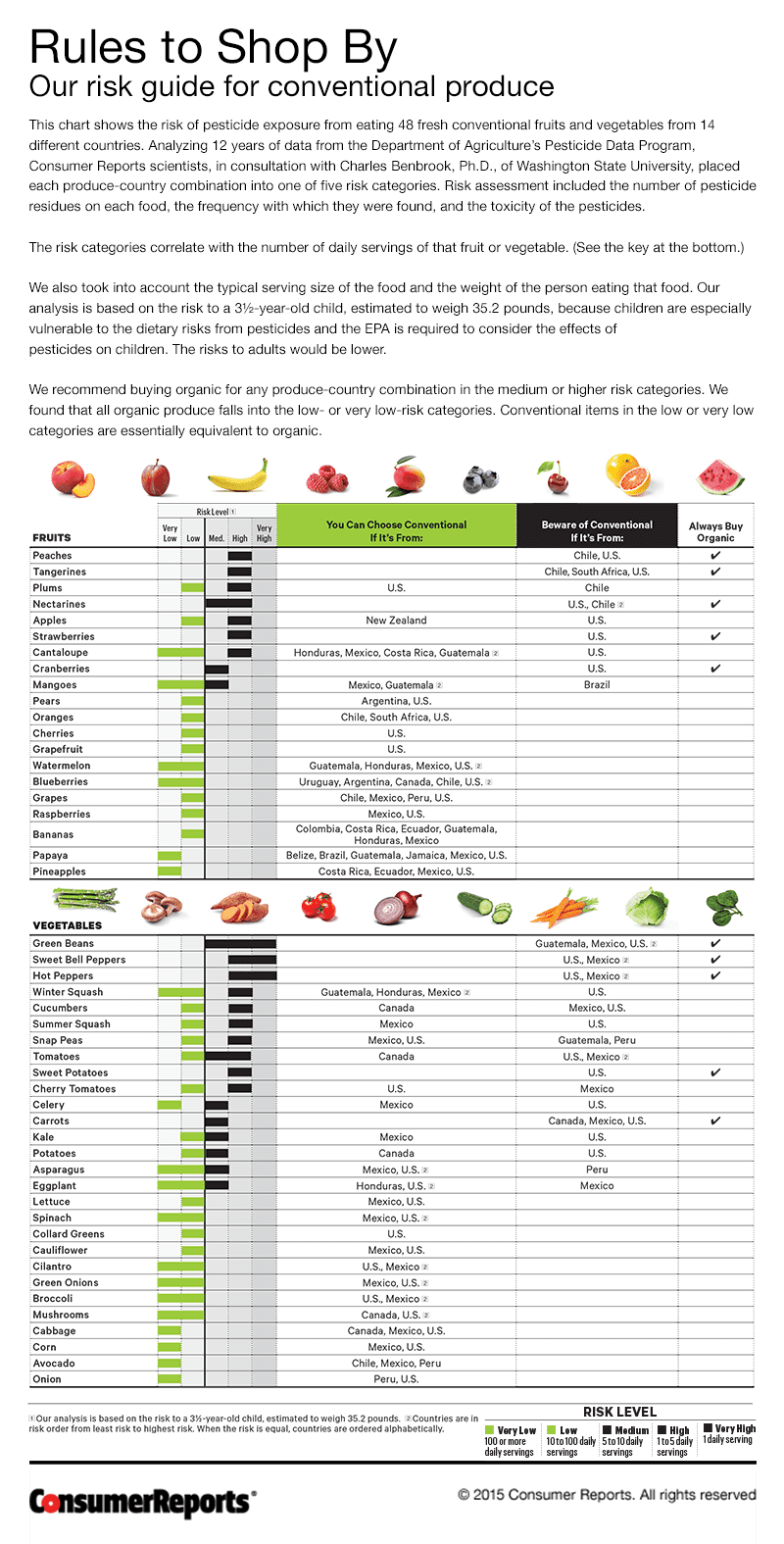Across America, confusion reigns in the supermarket aisles about how to eat healthfully. One thing on shopper’s minds: the pesticides in produce. In fact, a recent Consumer Reports survey of 1,050 people found that pesticides are a concern for 85 percent of Americans. So, are these worries justified? And should we all be buying organics—which can cost an average of 49 percent more than standard fruits and vegetables?
Experts at Consumer Reports believe that organic is always the best choice because it is better for your health, the environment, and the people who grow our food. The risk from pesticides in produce grown conventionally varies from very low to very high, depending on the type of produce and on the country where it’s grown. The differences can be dramatic. For instance, eating one serving of green beans from the U.S. is 200 times riskier than eating a serving of U.S.-grown broccoli.“We’re exposed to a cocktail of chemicals from our food on a daily basis,” says Michael Crupain, M.D., M.P.H., director of Consumer Reports’ Food Safety and Sustainability Center. For instance, the Centers for Disease Control and Prevention reports that there are traces of 29 different pesticides in the average American’s body. “It’s not realistic to expect we wouldn’t have any pesticides in our bodies in this day and age, but that would be the ideal,” says Crupain. “We just don’t know enough about the health effects.”If you want to minimize your pesticide exposure, see the chart below. We’ve placed fruits and vegetables into five risk categories—from very low to very high. (Download our full scientific report, “From Crop to Table.”) In many cases there’s a conventional item with a pesticide risk as low as organic. Below, you’ll find our experts’ answers to the most pressing questions about how pesticides affect health and the environment. Together, this information will help you make the best choices for you and your family.

